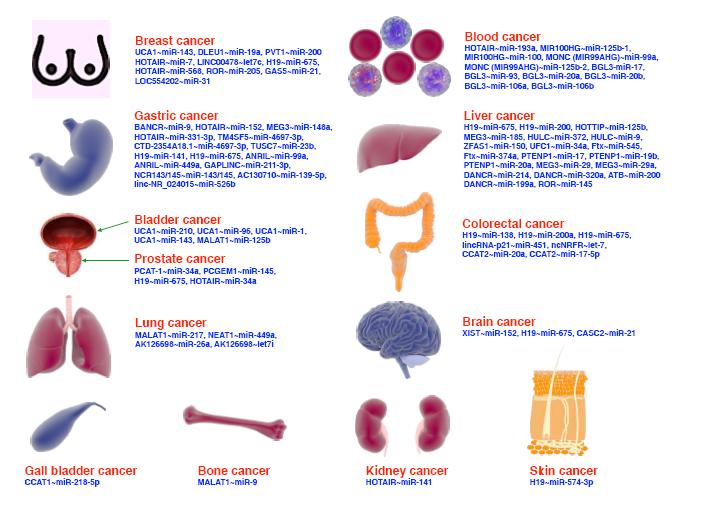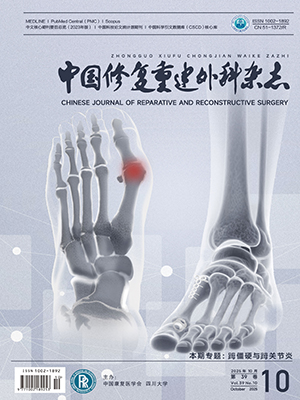| 1. |
Tashiro K, Feng J, Wu SH, et al. Pathological changes of adipose tissue in secondary lymphoedema. Br J Dermatol, 2017, 177(1): 158-167.
|
| 2. |
张雨田, 屈子怡, 谢芝宏, 等. 乳腺癌相关淋巴水肿的危险因素及治疗进展. 血管与腔内血管外科杂志, 2021, 7(11): 1344-1348, 1379.
|
| 3. |
Bernas M, Thiadens SRJ, Smoot B, et al. Lymphedema following cancer therapy: overview and options. Clin Exp Metastasis, 2018, 35(5-6): 547-551.
|
| 4. |
唐淑玲, 蒋奕. 淋巴水肿治疗的研究进展. 山东医药, 2023, 63(10): 102-105.
|
| 5. |
Rockson SG. Advances in lymphedema. Circ Res, 2021, 128(12): 2003-2016.
|
| 6. |
王欣欣, 王景信. 间充质干细胞源性外泌体治疗继发性淋巴水肿. 中国组织工程研究, 2023, 27(10): 1603-1609.
|
| 7. |
Maegawa J, Yabuki Y, Tomoeda H, et al. Outcomes of lymphaticovenous side-to-end anastomosis in peripheral lymphedema. J Vasc Surg, 2012, 55(3): 753-760.
|
| 8. |
Yang JC, Hayashi A, Visconti G, et al. Impact of retrograde anastomosis during supermicrosurgical lymphaticovenous anastomosis for cancer-related lower limb lymphedema: A retrospective cohort propensity-score-matched outcome analysis. Int J Surg, 2022, 104: 106720. doi: 10.1016/j.ijsu.2022.106720.
|
| 9. |
Suzuki Y, Sakuma H, Yamazaki S. Evaluation of patency rates of different lymphaticovenous anastomosis techniques and risk factors for obstruction in secondary upper extremity lymphedema. J Vasc Surg Venous Lymphat Disord, 2019, 7(1): 113-117.
|
| 10. |
Kwon JG, Kim Y, Jang MY, et al. The quality of life after lymphaticovenous anastomosis in 118 lower limb lymphedema patients. Arch Plast Surg, 2023, 50(5): 514-522.
|
| 11. |
Qiu SS, Pruimboom T, Cornelissen AJM, et al. Outcomes following lymphaticovenous anastomosis (LVA) for 100 cases of lymphedema: results over 24-months follow-up. Breast Cancer Res Treat, 2020, 184(1): 173-183.
|
| 12. |
Hara H, Mihara M. Lymphaticovenous anastomosis for advanced-stage lower limb lymphedema. Microsurgery, 2021, 41(2): 140-145.
|
| 13. |
Hara H, Mihara M. Effect of venous reflux on the surgical result of lymphaticovenous anastomosis. J Plast Reconstr Aesthet Surg, 2020, 73(6): 1174-1205.
|
| 14. |
Hara H, Mihara M. Blood reflux to the lymphatic vessels after lymphaticovenous anastomosis. Microsurgery, 2018, 38(4): 432-433.
|
| 15. |
Yang JC, Wu SC, Hayashi A, et al. Selection of optimal functional lymphatic vessel cutoff size in supermicrosurgical lymphaticovenous anastomosis in lower extremity lymphedema. Plast Reconstr Surg, 2022, 149(1): 237-246.
|
| 16. |
Gabriele G, Nigri A, Chisci G, et al. Combination of supramicrosurgical lymphatico-venular anastomosis (sLVA) and lymph-sparing liposuction in treating cancer-related lymphedema: Rationale for a regional one-stage approach. J Clin Med, 2024, 13(10): 2872. doi: 10.3390/jcm13102872.
|
| 17. |
Weiss M, Baumeister RG, Hahn K. Post-therapeutic lymphedema: scintigraphy before and after autologous lymph vessel transplantation: 8 years of long-term follow-up. Clin Nucl Med, 2002, 27(11): 788-792.
|
| 18. |
Weiss M, Baumeister RG, Frick A, et al. Lymphedema of the upper limb: evaluation of the functional outcome by dynamic imaging of lymph kinetics after autologous lymph vessel transplantation. Clin Nucl Med, 2015, 40(2): e117-e123.
|
| 19. |
Wallmichrath J, Schöpfer D, Frick A, et al. Investigations on the donor limb after harvest of lymphatic vessels for lymphedema surgery. J Vasc Surg Venous Lymphat Disord, 2023, 11(1): 167-176.
|
| 20. |
李圣利, 陈守正, 王善良, 等. 带瓣膜的静脉移植代替淋巴管治疗乳腺癌根治术后上肢淋巴水肿. 上海医学, 2000, 23(7): 393-395.
|
| 21. |
施越冬, 张学军, 徐剑炜, 等. 静脉淋巴管复合组织瓣移植在治疗下肢继发性淋巴水肿中的作用. 中国临床医学, 2005, 12(5): 831-834.
|
| 22. |
Dai Tt, Jiang Zh, Li Sl, et al. Reconstruction of lymph vessel by lymphatic endothelial cells combined with polyglycolic acid scaffolds: a pilot study. J Biotechnol, 2010, 150(1): 182-189.
|
| 23. |
Kanapathy M, Patel NM, Kalaskar DM, et al. Tissue-engineered lymphatic graft for the treatment of lymphedema. J Surg Res, 2014, 192(2): 544-554.
|
| 24. |
Kanapathy M, Kalaskar D, Mosahebi A, et al. Development of a tissue-engineered lymphatic graft using nanocomposite polymer for the treatment of secondary lymphedema. Artif Organs, 2016, 40(3): E1-E11.
|
| 25. |
Hassani C, Tran K, Palmer SL, et al. Vascularized lymph node transfer: A primer for the radiologist. Radiographics, 2020, 40(4): 1073-1089.
|
| 26. |
Poon Y, Wei CY. Vascularized groin lymph node flap transfer for postmastectomy upper limb lymphedema: flap anatomy, recipient sites, and outcomes. Plast Reconstr Surg, 2014, 133(3): 428e. doi: 10.1097/01.prs.0000438451.45227.b6.
|
| 27. |
Raju A, Chang DW. Vascularized lymph node transfer for treatment of lymphedema: a comprehensive literature review. Ann Surg, 2015, 261(5): 1013-1023.
|
| 28. |
Moon KC, Kim HK, Lee TY, et al. Vascularized lymph node transfer for surgical treatments of upper versus lower extremity lymphedema. J Vasc Surg Venous Lymphat Disord, 2022, 10(1): 170-178.
|
| 29. |
Ciudad P, Agko M, Patel KM, et al. A single-stage triple-inset vascularized gastroepiploic lymph node transfers for the surgical treatment of extremity lymphedema. Microsurgery, 2021, 41(1): 97-99.
|
| 30. |
Miller TA. Charles procedure for lymphedema: a warning. Am J Surg, 1980, 139(2): 290-292.
|
| 31. |
Chen SH, Cem Yildirim ME, Mousavi SA, et al. Long-term functional outcomes upon application of split-thickness skin graft around major joints in HCC (Hung-Chi Chen)-modified Charles’ procedure for advanced lymphedema. Asian J Surg, 2021, 44(1): 169-173.
|
| 32. |
Sapountzis S, Ciudad P, Lim SY, et al. Modified Charles procedure and lymph node flap transfer for advanced lower extremity lymphedema. Microsurgery, 2014, 34(6): 439-447.
|
| 33. |
Wu S, Coombs DM, Gurunian R. Liposuction: Concepts, safety, and techniques in body-contouring surgery. Cleve Clin J Med, 2020, 87(6): 367-375.
|
| 34. |
Schaverien MV, Munnoch DA, Brorson H. Liposuction treatment of lymphedema. Semin Plast Surg, 2018, 32(1): 42-47.
|
| 35. |
Brorson H. Liposuction in lymphedema treatment. J Reconstr Microsurg, 2016, 32(1): 56-65.
|
| 36. |
Brorson H, Svensson H. Liposuction combined with controlled compression therapy reduces arm lymphedema more effectively than controlled compression therapy alone. Plast Reconstr Surg, 1998, 102(4): 1058-1068.
|
| 37. |
Greene AK, Voss SD, Maclellan RA. Liposuction for swelling in patients with lymphedema. N Engl J Med, 2017, 377(18): 1788-1789.
|
| 38. |
Boyages J, Kastanias K, Koelmeyer LA, et al. Liposuction for advanced lymphedema: A multidisciplinary approach for complete reduction of arm and leg swelling. Ann Surg Oncol, 2015, 22 Suppl 3: S1263-S1270.
|
| 39. |
Xin J, Sun Y, Xia S, et al. Liposuction in cancer-related lower extremity lymphedema: an investigative study on clinical applications. World J Surg Oncol, 2022, 20(1): 6. doi: 10.1186/s12957-021-02472-3.
|
| 40. |
Donahue PMC, MacKenzie A, Filipovic A, et al. Advances in the prevention and treatment of breast cancer-related lymphedema. Breast Cancer Res Treat, 2023, 200(1): 1-14.
|
| 41. |
王欣. 淋巴水肿的外科治疗. 组织工程与重建外科杂志, 2022, 18(1): 1-3.
|
| 42. |
魏苗苗, 吴祥奎, 吴必华, 等. 手动负压抽吸联合血管化淋巴结移植治疗继发性下肢淋巴水肿的疗效分析. 组织工程与重建外科杂志, 2022, 18(1): 14-18.
|
| 43. |
Das RK, Drolet BC, Perdikis G. Suction-assisted lipectomy and lymphatic procedures for lymphedema in the ambulatory surgery setting from 2016 to 2019. J Plast Reconstr Aesthet Surg, 2023, 82: 27-30.
|
| 44. |
Nicoli F, Constantinides J, Ciudad P, et al. Free lymph node flap transfer and laser-assisted liposuction: a combined technique for the treatment of moderate upper limb lymphedema. Lasers Med Sci, 2015, 30(4): 1377-1385.
|




